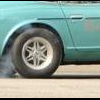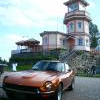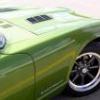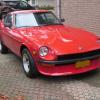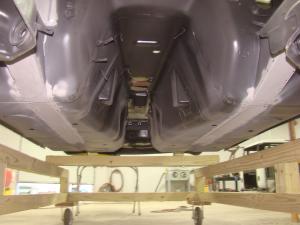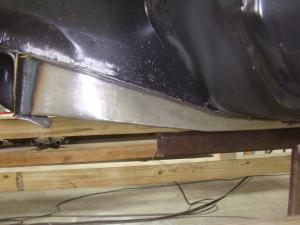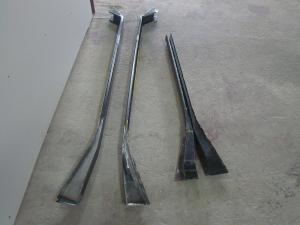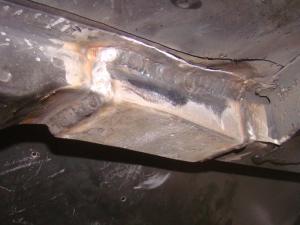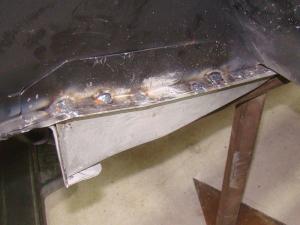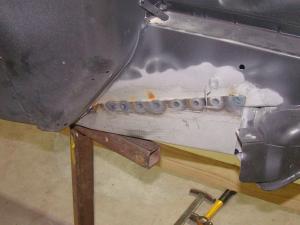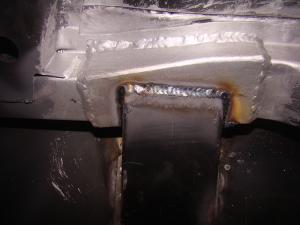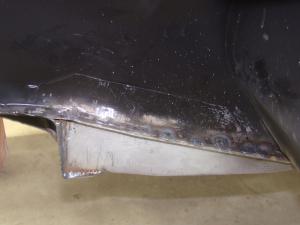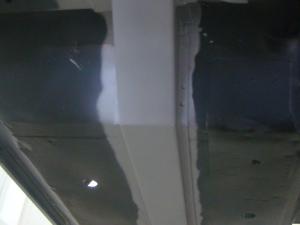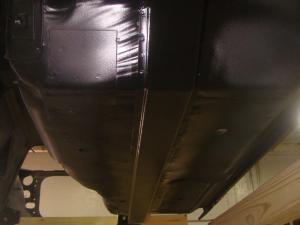Source:http://www.improvedtouring.com/forums/showthread.php?23288-Which-Intake-Manifold-for-a-240Z&s=188653bfe00de2be0d6f11b4e3afdadf KThomas Jan 16 2008 E88 or N33, whichever you have that's prettier. Rebello used to claim 10 hp or something stupid like that. We couldn't show enough difference on an east coast dyno to matter. Our ARRC wins were with an E88. Needles- they need to look like a telephone pole. More metal, not less. SM's, N27's and anything "ground on" will be too fat. N27 was stock for 1971, N54 for 1972. I think we ran something closer to an N58. With everything in perfect blueprint (bottom end, valve placement, cam, and carbs) and a decent header, you'll be too fat up to 5500 rpm and too lean past 6800. So we slow the suction piston down and live with a little leanness over 7200. We used [secret] for the damper oil, so 20w or 10w30 is fine. I don't believe in lighter, like ATF. Makes the piston come up too fast and runs fat. Now the old school thinking was get the piston up quick so there's no restriction. ATF for damper oil was the rage back in the 70's. Ive found that it just doesn't make horsepower that way. Rich mixture will cure a lot of ills, for example you can run zero point gap (if you had points) on a Z if you put enough gas in it. But if the rest of your system is blueprint you don't need to be rich, you need to be lean. Mixture control is more important than flow up to about 6800. There are some very competent Z pilots out there running the Rebello method of no oil whatsoever, so the piston slams up to the top soon as you crack the throttle. Those guys never beat me. And my car idles and drives around the pits without spitting black smoke all over the place. I like my way. In the end you need a bigger jet to take care of the over 7000 lean problem, but then you're in for custom needles. It isn't really a problem, you won't melt a piston, but there is a few more horsepower up there to be had. The stock jet limits you. But having said that you should be able to win races with everything perfectly stock, and we never made it to the bigger jet part (we ran to 7400 rpm at Road Atlanta, 7200 tops anywhere else). You really need a good O2 sensor on each bank (I used cyl's 2 and 5) and a HAL30 or similar lambda or air/fuel sensor. We were fortunate to do our tuning with a proper engine dyno, but if I was on a budget I'd put the instrumentation in car for test days when you can look (I've decided driver's don't see anything during a race unless it's a big blinking red light). Uh, the secret oil is secret because I forgot what the mix was. Man, i miss my brain... One other thing on the operation of SU's. The common knowledge was running lighter oil in the damper allowed the piston to go up faster and hence you were at a lower point on the needle and therefore had more jet area exposed which equalled richer, which everybody associated with more power. The factory will tell you that slowing the damper down with thicker oil created a bigger vacuum, which resulted in more gas being pulled past the needle and hence a richer mixture. That was the case I always found on street cars, they ran better with thicker, or proper, damper oil. Now that counters what I just told you in the previous post. We slowed the piston down to make it leaner. However, we're talking about two different regions of piston travel, rpm, and vacuum. The region of piston travel we care about on the track is the upper 1/3 of travel. On the street, the first 2/3. For rpm, above 4000 for track, below 4000 for street. For street rpm the throttle and piston position can affect vacuum greatly, for race the throttle is always full open when it isn't full closed (you Z pilots got that, right? Full open, there is no part throttle or "feathering" in a Z. If you can't do that we need to talk about shocks and setup), so vacuum is more a function of rpm, and less affected by the last 1/3 of piston travel than it is with the first 2/3. What we were slowing down was the last 1/3 of piston travel (and running stock like oil to have stock like piston response in the street range of throttle position and rpm). On a stock setup, when you open the throttle at 4000 rpm the piston pretty much goes straight to the top. The needle is essentially out of the jet so what is affecting your mixture is the vacuum over the jet bridge caused by increasing rpm. It ain't the piston moving the needle in the jet as you go from 4000 to 7000 rpm. So we slowed up the last 1/3 of travel, ran long needles with very little taper at the end, and lived with lean mixtures above 7k. There used to be a video showing the piston movement during a dyno pull on ZTherapy's website. That was mine, very early in our engine program. Headers will affect mixture, so YMMV. katman Manifolds Your right there is a bit of a difference. The walls seperating cyl2-3 and 4-5 on the e-88s have less of a taper from the carb side than the n-33's which are reatively blunt. I have not seen an n-36 to compare, but have heard they are either similar or identical to the n-33. We're gonna try each (e-88 and n-33) just to see how the different runners affeect it if at all. My sneaking suspicion is Katmans right that we are best off with the purtiest one.





